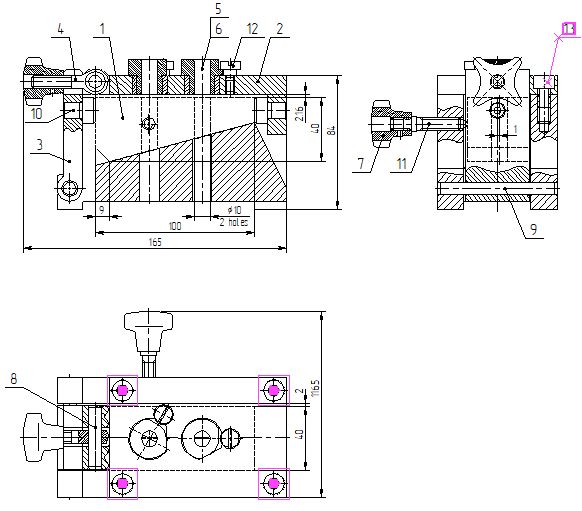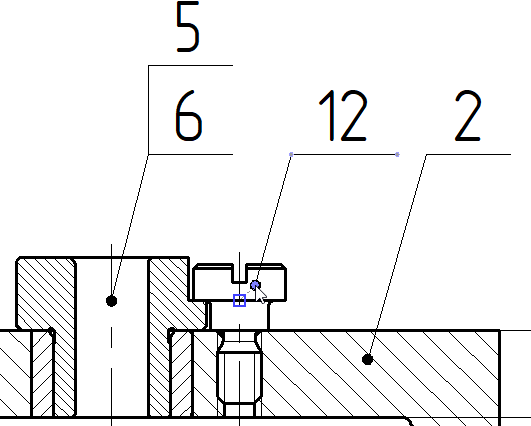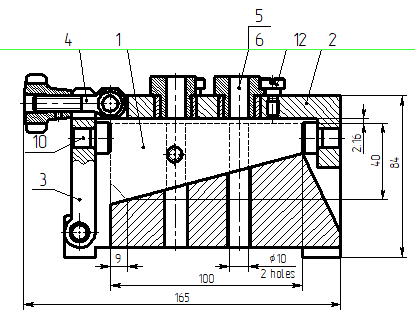Example of 2D Assembly > Annotations and Product Composition |
  
|
When an assembly drawing contains multiple views, keep in mind, that all visible fragments are included into product composition by default, i.e. the same fragment on different views will be counted as different fragments, so the number of items in product composition will not represent the actual design of the assembly. Therefore, when inserting fragments, you should manage parameters of their inclusion into product composition. If there are multiple instances of the same fragment, it is convenient to include them into product composition on a view, where all instances are visible, and exclude on other views. The drill jig example contains four identical fragments of lid fixing screws. On the front view none of them are visible, on the left view only one is visible, on the top view all four screws are visible; therefore they're included into product composition on top view and excluded on left view. However, their position number callout should be indicated on the left view, since the local section of this view shows how these screws connect the body and the lid. The Callouts command doesn't allow to create callouts for fragments not included into product composition. Therefore the position 7 callout on the left view is linked to the fragment on the top view, rather than the fragment it is attached to. Similar situation is also with the locking screw (pos. 6).


The end of the callout's arrow should be linked to fragment's node. Otherwise, changes in assembly geometry may result in a situation, where the callout is drawn from a wrong fragment. In order to avoid excessive nodes creation, you may use intersections of fragment's graphic lines or to a node used for fragment's positioning and specify some small offsets from such node. In the example below, the callout of the locking screw is linked to the screw's fixing point, and offsets are added so that the end of the arrow doesn't blend in with graphic lines of the fragment.

As the assembly geometry changes, fixing points of different callouts may shift in relation to each other, which would break the callouts alignment. In order to preserve the alighnment, shoulders of multiple callouts may be linked to the same construction line created for this purpose.
